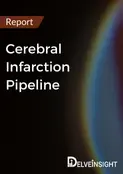Cerebral infarction encompasses a complex medical phenomenon requiring systematic understanding of interconnected biological processes and clinical interventions. This comprehensive pathway spans from initial vascular events through long-term adaptation, providing healthcare teams with essential guidance for coordinated patient management. Each component contributes to overall outcomes and recovery potential.
Cerebrovascular Occlusion and Tissue Hypoperfusion
Stroke pathogenesis begins with arterial obstruction that disrupts normal cerebral circulation patterns. Thrombotic or embolic material blocks vessels, creating immediate perfusion deficits in supplied brain territories. The severity of ischemia depends on occlusion location, collateral flow adequacy, and duration of reduced perfusion. This initial insult establishes the foundation for all subsequent pathological processes.
Metabolic Dysfunction and Energy Crisis
Cerebral hypoperfusion triggers immediate cellular responses as neurons experience profound substrate deprivation. Mitochondrial function becomes severely impaired, leading to inadequate energy production and cellular stress responses. Cells shift to inefficient anaerobic metabolism, generating toxic metabolites that further compromise cellular viability. This bioenergetic failure underlies subsequent pathological cascades.
Membrane Destabilization and Ionic Disruption
Cellular energy depletion compromises essential membrane transport mechanisms responsible for maintaining ionic homeostasis. Sodium-potassium pumps fail, calcium channels malfunction, and membrane potentials collapse. These ionic disturbances trigger massive neurotransmitter release, particularly glutamate, creating toxic conditions for surrounding neural tissue. The excitotoxic environment amplifies initial injury through secondary mechanisms.
Inflammatory Response and Secondary Tissue Damage
Injured brain tissue activates complex inflammatory pathways involving resident and circulating immune cells. Microglial activation, cytokine release, and neutrophil infiltration characterize this response. While inflammation serves protective functions, it simultaneously contributes to tissue damage through oxidative stress and enzymatic degradation. This dual nature creates therapeutic challenges in managing inflammatory responses.
Vascular Barrier Compromise and Edema Development
Stroke progression invariably involves blood-brain barrier disruption, allowing fluid and protein extravasation into cerebral tissue. This barrier failure creates vasogenic edema, increases intracranial pressure, and may compromise remaining perfusion through mass effect. The relationship between barrier breakdown and inflammation creates additional complexity in clinical management strategies.
Clinical Syndrome Development and Assessment
Pathological processes eventually manifest as recognizable neurological syndromes reflecting anatomical injury patterns. Patients develop characteristic stroke symptoms including motor weakness, sensory deficits, language impairments, and visual disturbances. Comprehensive clinical evaluation guides diagnostic workup and treatment planning within the systematic Cerebral Infarction Pipeline framework.
Emergency Management and Acute Intervention
Contemporary stroke care emphasizes rapid therapeutic intervention to minimize brain damage and optimize outcomes. Cerebral Infarction Treatment protocols include intravenous thrombolysis, mechanical thrombectomy, and supportive care measures. Treatment selection depends on patient characteristics, symptom duration, and institutional resources. Time-sensitive decision-making remains crucial for therapeutic success.
Recovery Facilitation and Adaptive Processes
Following acute stabilization, care focuses on promoting neurological recovery through rehabilitation interventions. The brain's neuroplastic capacity enables functional reorganization, compensatory mechanisms, and skill reacquisition. Interdisciplinary rehabilitation teams address motor, cognitive, and communication deficits while supporting psychosocial adjustment. This phase emphasizes maximizing functional independence and quality of life.
Risk Mitigation and Secondary Prevention
Long-term stroke management prioritizes preventing recurrent events through comprehensive risk factor modification. Patients collaborate with healthcare providers to address hypertension, diabetes, hyperlipidemia, and lifestyle factors. Antiplatelet therapy, anticoagulation, and surgical interventions may be indicated based on stroke mechanism. This preventive approach reduces future vascular event risk.
Therapeutic Development and Innovation
Continued advancement in stroke care depends on ongoing research and development efforts by specialized organizations. Cerebral Infarction Companies focus on developing innovative treatments spanning acute intervention, neuroprotection, and rehabilitation enhancement. These efforts translate scientific discoveries into practical clinical solutions for improved patient outcomes.
Research Excellence and Clinical Evidence
Systematic clinical investigation provides the evidence base for optimal stroke management through rigorous scientific methodology. Cerebral Infarction Clinical Trials evaluate intervention effectiveness, safety, and implementation strategies across diverse populations. These investigations establish treatment standards and guide clinical practice evolution.
Comprehensive Integration
Both framework perspectives demonstrate that cerebral infarction requires multifaceted understanding encompassing pathophysiology, clinical management, and recovery processes. This integrated approach optimizes patient outcomes through coordinated care delivery, evidence-based interventions, and continuous quality improvement efforts.
Latest Reports Offered by Delveinsight:
Cart-related Neurotoxicity Market | Eosinophilia Market | Interbody Cages Market | Mammography Devices Market | Moderate Psoriasis Market | Pelvic Organ Prolapse Market | Phenylketonuria Market | Skin Burns Market | Transfusion-dependent Thalassaemia Market | Cancer Vaccines Market | Cardiac Monitoring System Market | Celiac Disease Market | Desmoplastic Small Round Cell Tumors Dsrcts Market | Esophageal Cancer Market | Fetal And Neonatal Monitoring Devices Market Market | Gender Dysphoria Market | Her3 Market | Hernia Repair Devices Market | Neurofibroma Market | Non Alcoholic Fatty Liver Disease Nafld Market | Nosocomial Infections Market | Oxygen & Hyperbaric Oxygen Equipment Market | Parkinson’s Disease Market | Phototherapies For Psoriasis Market | Spinal Cord Stimulators Market | Tbi Market | Vascular Graft Devices Market | Vulvar Cancer Market
About DelveInsight
DelveInsight is a trusted provider of life sciences and pharmaceutical market research and consulting, offering actionable insights that empower organizations to make informed decisions. With a commitment to delivering strategic intelligence, DelveInsight serves as a key partner to global pharmaceutical, biotechnology, and healthcare companies looking to excel in an evolving market landscape.
Contact Us
Kanishk
Email: kkumar@delveinsight.com

